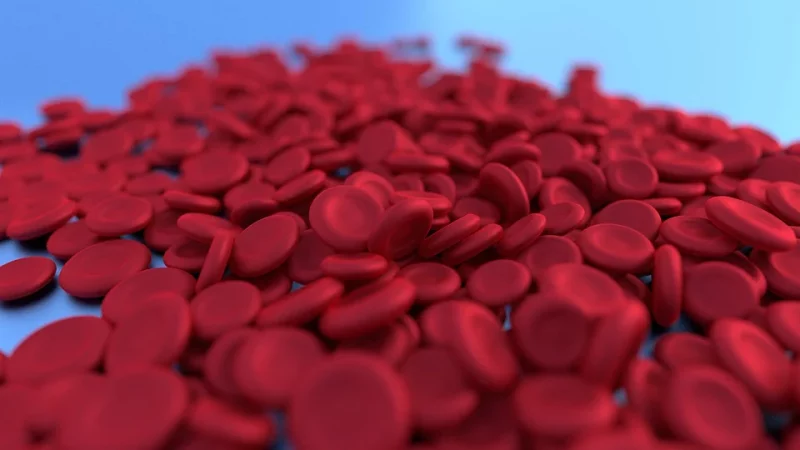Do you want to know how much hemoglobin drops after blood donation? If yes, then read this article thoroughly. Well, don’t be stressed about it! We are here to help you in finding the answer to what you want.
Now starting from hemoglobin is the most important component of blood, it carries oxygen to all parts of our body. The hemoglobin contains iron, minerals, or proteins that were present in our diet.
Hemoglobin is present in the red blood cells; it is an iron-rich protein molecule. When we inhale oxygen, the oxygen enters the lungs and is attached to the hemoglobin; then, hemoglobin transfers the oxygen from the lungs to all the tissues and cells in our body. But, there is so much more to know. Here, we will discuss the amount of hemoglobin that was decreased after blood donation. And hope so after reading this article you will get all the information about your question.
What Are Normal Hemoglobin Levels?
Before blood transplantation, keep in mind the normal hemoglobin levels. Just below, we have written the levels of hemoglobin. Remember one thing, that was; normal hemoglobin levels vary in men and women.
- Normal hemoglobin levels for females are between 120 g/L to 160 g/L.
- Normal hemoglobin levels for males are between 140 g/L to 180 g/L.
After much research, they observed that female donors’ hemoglobin required for plasma donation is a minimum of 125 g/L, and for males, it is about 130g/L. Therefore, if the donor satisfies these criteria, then they are eligible for blood donation.
How Much Hemoglobin Level Drop After Blood Donation?
So, how much hemoglobin drops after blood donation? Here, we discussed the answer. When you have donated blood, the level of hemoglobin and oxygen in your body is decreased by (p < 0.001) within one month after a single blood donation, which means hemoglobin levels dropped about 4, 10, and 7%, respectively.
A single blood donation (p 0.001) reduced hemoglobin level, hemoglobin concentration, iron, and red blood cell count (RBC), all essential hematological factors for carrying oxygen, and repeated donations (p 0.001) reduced them even more. Hematocrit decreased by 11%, hemoglobin concentration by 10%, iron by 50%, and RBC by 12% after a blood donation (p 0.001). The homeopathic group’s maximum power output rose continuously (p 0.001), indicating good physical performance as they performed the maximum activity tests.
Low Hemoglobin: What Does It Means
Low hemoglobin means a person facing iron deficiency. Iron is an essential component of red blood cells and helps in making red blood cells. Hemoglobin molecules are the building blocks of iron; low hemoglobin causes fatigue and weakness in the body. Low iron is due to some reasons that include:
- Less intake of iron in your diet;
- Continuous donation of blood, for example; if women donate blood 2-times per year, or men donate blood for 3-times per year;
- For women, menstrual loss bleeding; and
- Due to gradual bleeding in the stomach or colon, or digestive tract.
These are the reasons due to which a donor faces a deficiency of hemoglobin after donating blood. It’s best that you read how to increase hemoglobin for blood donation.
What Is Anemia?
Anemia is a disease in which the hemoglobin level is less than 120 g/L, especially in unmarried women. Fo men hemoglobin level less than 130 g/L. Here are the following symptoms that are associated with anemia:
- Fatigue
- Low exercise activity
- Weakness
If you feel such symptoms, it means the hemoglobin level of your body is below 110 g/L. It would help if you had a checkup before donating blood. How can donating blood become a potential cause of anemia? When you donate blood frequently, it can cause a disease called anemia. Because donation of blood results in low hemoglobin levels. During whole blood donation, hemoglobin is dropped by about ten g/L.
After donating whole blood, only healthy donors can produce new red blood cells. Iron is the essential component of red blood cells. So, before donating, make sure that your body is not suffering from iron deficiency. Low iron level means your body cannot replenish new red blood cells, and corresponding decrease the level of hemoglobin. It may be helpful to read about what to eat before blood donation and what to eat after blood donation.
Preventing anemia
If a donor wants to prevent anemia(low hemoglobin level) after blood donation, donors must have a sufficient amount of iron. Frequent blood donors like women donating blood 2-times per year, or men donating blood 3-times per year; these donors need to eat fruits or vegetables rich in iron or increase the intake of iron supplements. You may want to know more about hemoglobin and iron functions.
Facing low hemoglobin level: what to do
It is recommended that a donor check a doctor or specialist if facing hemoglobin and iron deficiency. Your doctor prescribes you medicines and tells you about the reason for your low hemoglobin level. A blood donor must use multivitamin iron capsules and increase the intake of a high iron diet to get rid of low hemoglobin level. Read how to increase iron levels for blood donation.
It’s A Wrap!
Thank you, friends, for reading this article at the end. And we hope that you will get the answer about how much hemoglobin drops after blood donation—hoping for the best.

